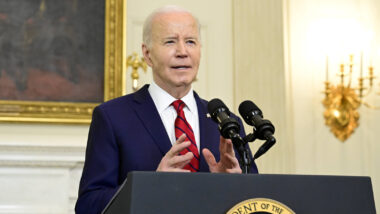Ein weiterer Vorschlag zur Debatte rund um Netzneutralität in den USA kommt vom Center For Democracy and Technology (CDT). Sie fordern „Principles for Network Management“:
In its comments to the FCC, CDT suggested several principles that should guide network operators and policymakers as they consider questions relating to network management:
* First, network management practices should be transparent. Transparency can provide an important safeguard, enabling consumers and consumer advocates to push back against practices that could negatively affect competition or impair the usability of particular applications. Network operators should disclose sufficient information to provide a basis for comparison; a heavy BitTorrent user, for example, might be very interested to know if one broadband provider in the local area degrades BitTorrent traffic to control congestion while the other does not. Transparency also can encourage developers of services and applications to shape their products‘ bandwidth usage patterns in ways that take account of legitimate network congestion considerations by, for example, designing an application to stay below the congestion levels enforced by an ISP.
* Second, network management practices should be evenly applied. Techniques that put a network operator in the position to pick and choose among applications, services or protocols – deciding which ones will be subject to bandwidth limits or greater risk of packet loss, for example – carry serious risks. Once the operator is in the business of selecting particular traffic for inferior treatment, there is the possibility of mixed motives, as choices between different tactics could be tinged by competitive considerations. Innovators, meanwhile, would need to start worrying about whether and how their applications might be targeted. These risks can be mitigated if network management techniques are based on objective criteria, such as quantity of bandwidth used, and applied evenly, without regard to the content or source of particular traffic.
* Third, network management practices should comply with core internetworking standards. The Internet has been described as a „network of networks,“ and common protocols with generally accepted technical standards (such as the TCP/IP suite of protocols) are what enable communications and applications to traverse its constituent networks on a seamless basis. Developers of applications rely and design technology with the expectation that applications built to use and respond to these standards will function the same way across the public Internet. Network management tactics that depart from key standards risk increasing instability across the Internet, causing applications behave in unexpected ways and complicating the task facing innovators.
These principles are intended to apply to network management for congestion control. Tactics for protecting subscribers against harmful or nuisance traffic like spam or malware may well require a lower level of transparency and a higher level of tolerance for targeting traffic based on its content.




Hier muss man auf die Feinheiten des Diskurses achten: „Network Management“ wird von denen propagiert, die „Network Neutrality“ in der radikalen Fassung (also auch Verbot von Traffic-Priorisierung, QoS etc.) ablehnen. Das CDT steht in dieser libertären und wirtschaftsnahen Tradition, sich z.B. gegen ein Regulationsmandat für die FCC zu wehren.
Manche ISPs verwenden „Network Management“ auch für sowas wie Traffic-basierte AdInjection (Phorm etc.), Content-Filter und andere Deep-Packet-Inspection Schweinereien, also als Gegenbegriff sogar zur engen Fassung von „Network Neutrality“, die sich hauptsächlich gegen Inhalte-Überwachung, Filter und Zensur richtet.
Generell ist der Begriff „Network Management“ allerdings nützlich, um die Realitäten zu klarer sehen. Congestion Management und ähnliches gibt es seit dem Anfang von TCP, und Diffserv und andere QoS-Protokolle verteilen Bandbreiten ungleich, um die User auf anderer Ebene fair zu behandeln. VoIP braucht einfach andere Latenzen als z.B. FTP- oder P2P-Traffic.
Lesenswert dazu: Milton Mueller zu „was NN“ bedeuten sollte, und ein IETF-Paper zur Frage „Wer definiert sinnvollerweise Fairness?“
Ein kurzer Überblick zu neuer DPI-Hardware (80 GBit/s – das geht jetzt für Tier-1-ISPs!), Phorm und der Datenschutz-Beschwerde gegen Bell Canada steht in meinem Blog. Ich werde das Thema NN/DPI künftig regelmäßig dort behandeln.